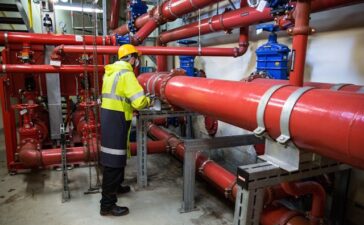Urban green spaces are essential for the well-being of city dwellers, providing a respite from the concrete jungle and offering opportunities for recreation, relaxation, and community engagement. However, the scarcity of available land in urban areas often poses challenges for the creation and maintenance of such spaces. In this context, temporary outdoor structures emerge as a viable solution to maximize the utilization of limited urban spaces, catering to various recreational and community needs. Among these structures, temporary sporting constructions play a significant role in promoting physical activity and fostering social interaction.

Enhancing Accessibility and Flexibility
One of the primary advantages of temporary outdoor structures is their ability to enhance accessibility to green spaces in urban areas. These structures can be set up in vacant lots, parking spaces, or underutilized areas, transforming them into vibrant hubs of activity. Unlike permanent structures, temporary installations offer flexibility in location and duration, allowing for experimentation with different layouts and configurations to suit the needs of the community.
Promoting Physical Activity
Temporary sporting structures contribute to the promotion of physical activity in urban environments. From pop-up soccer fields and basketball courts to temporary skate parks and cycling tracks, these structures offer opportunities for residents to engage in sports and recreational activities closer to their homes. By providing accessible venues for exercise, these structures help combat sedentary lifestyles and promote health and well-being among urban populations.
Fostering Community Engagement
In addition to promoting physical activity, temporary outdoor structures serve as catalysts for community engagement and social interaction. Sporting events, tournaments, and fitness classes organized around these structures bring people together, fostering a sense of belonging and camaraderie. These communal activities not only strengthen social ties but also contribute to the creation of vibrant and inclusive urban communities.
Minimizing Environmental Impact
Temporary outdoor structures offer a sustainable approach to maximizing urban green spaces while minimizing environmental impact. Unlike permanent construction projects, which may require significant land clearance and infrastructure development, temporary structures can be assembled using lightweight and recyclable materials. Additionally, their temporary nature allows for the preservation of existing greenery and ecosystems, ensuring minimal disruption to the environment.

Adapting to Changing Needs
The temporary nature of these structures allows for easy adaptation to changing community needs and preferences. As urban demographics evolve and recreational trends shift, temporary installations can be modified or relocated to better serve the interests of the residents. This adaptability ensures that urban green spaces remain relevant and responsive to the dynamic demands of the community. Temporary outdoor structures offer a versatile and sustainable solution for maximizing urban green spaces and promoting community well-being. Among these structures, temporary sporting facilities play a vital role in enhancing accessibility to recreational opportunities, fostering physical activity, and nurturing social cohesion. By harnessing the potential of temporary installations, cities can create vibrant and inclusive environments where residents can thrive both physically and socially amidst the urban landscape. As urbanization continues to shape the future of our cities, the integration of temporary outdoor structures will be key to ensuring that green spaces remain accessible, dynamic, and resilient for generations to come.





